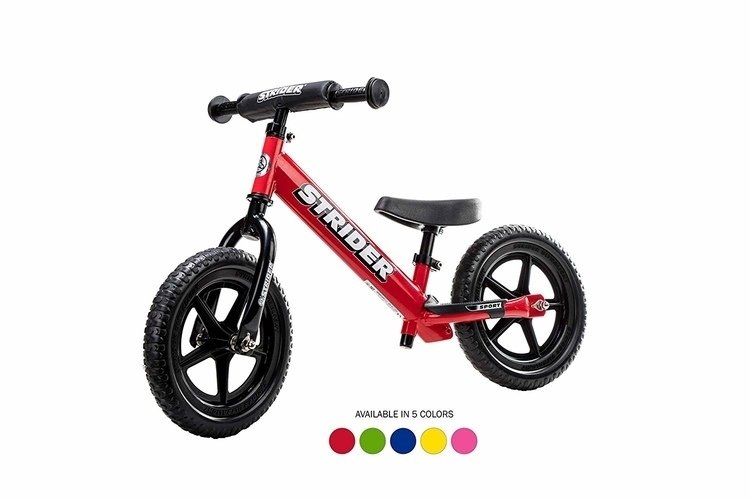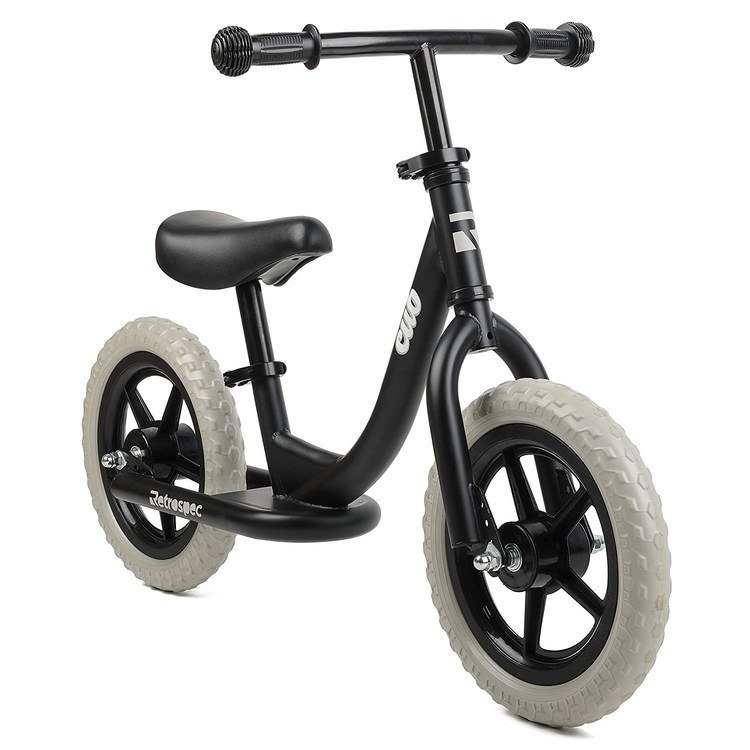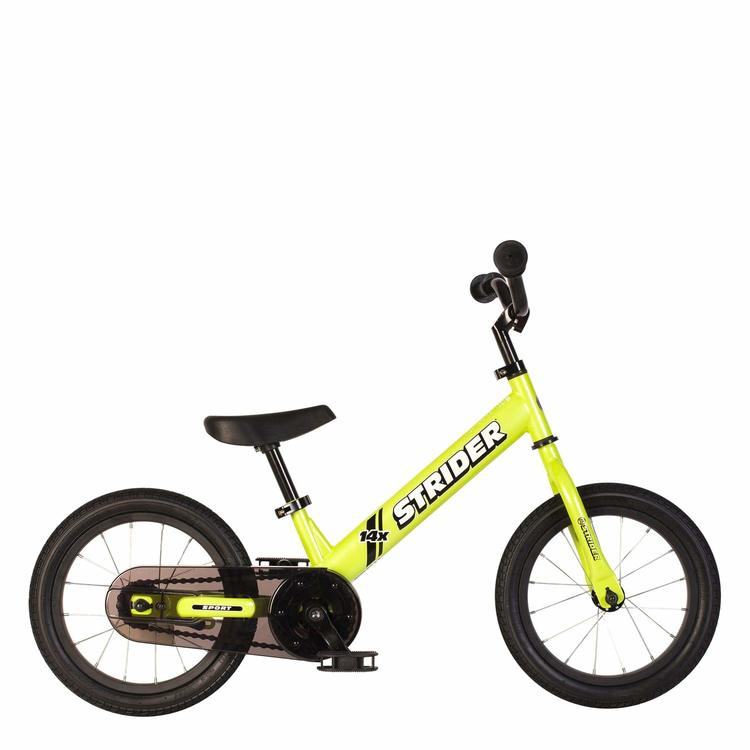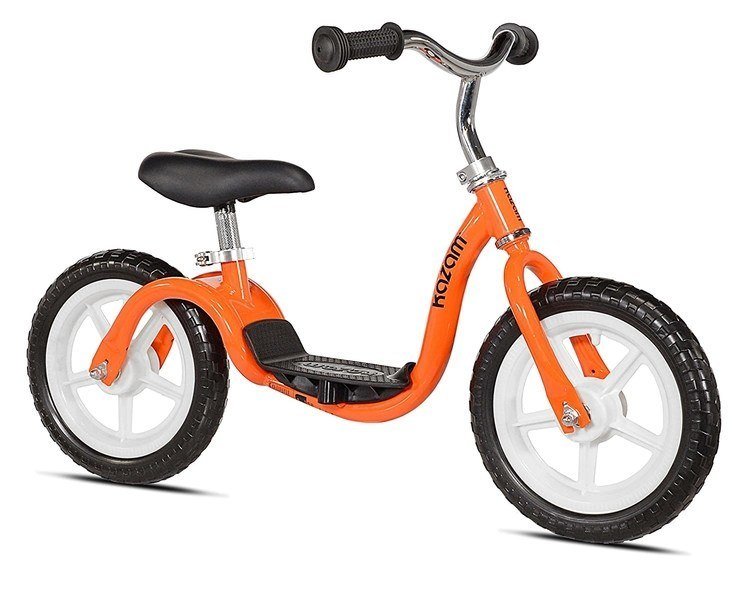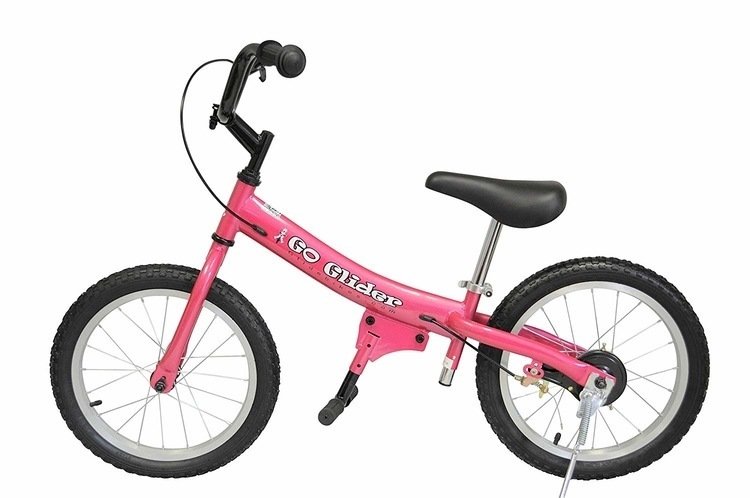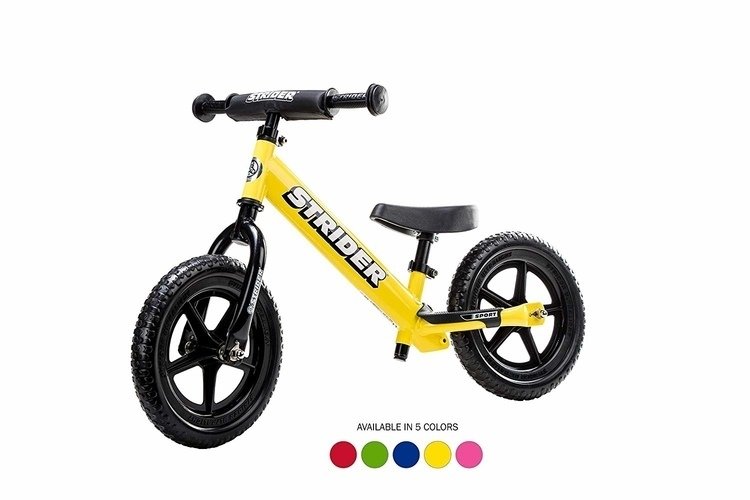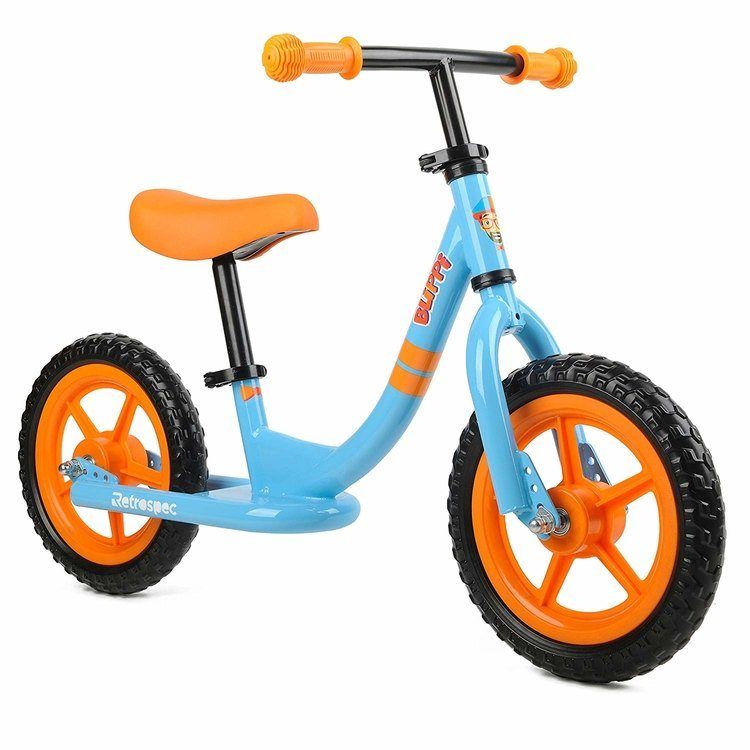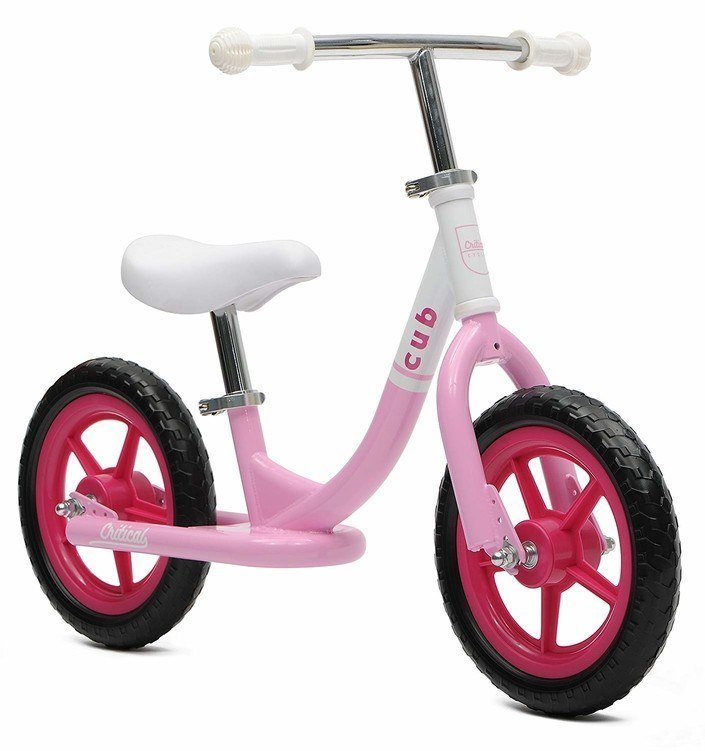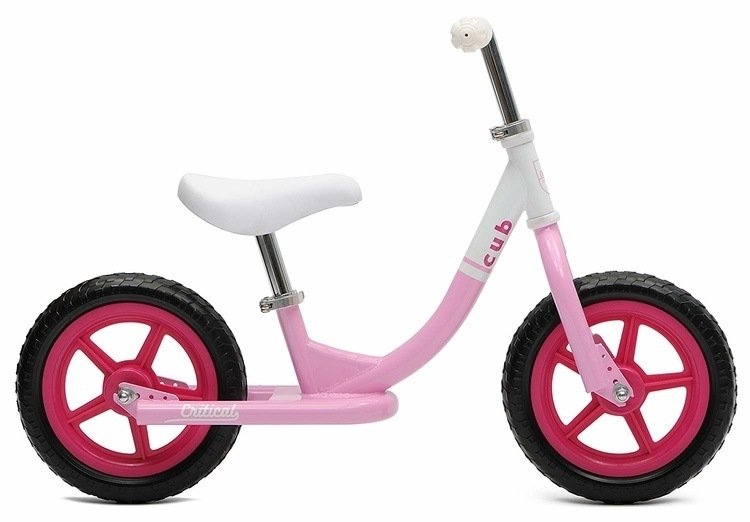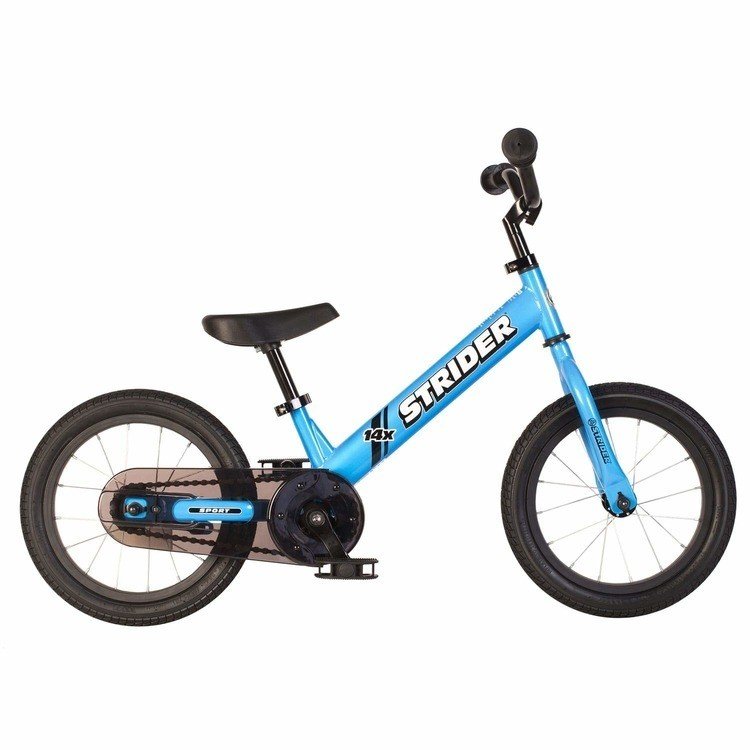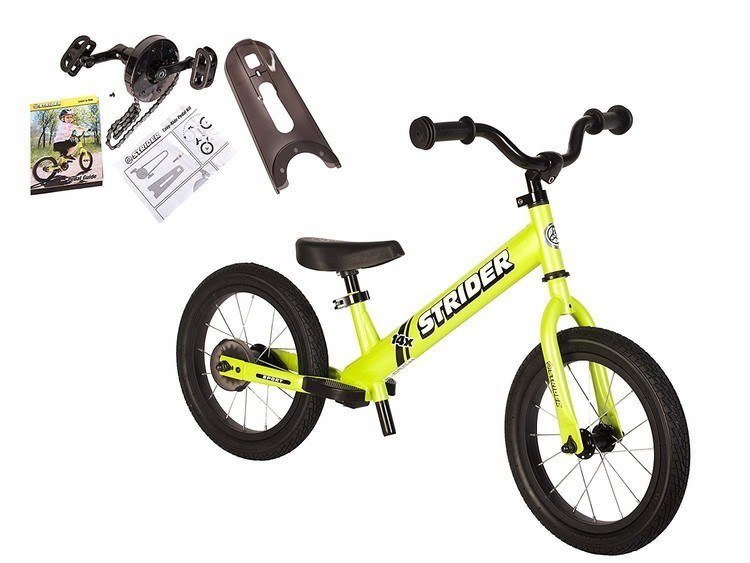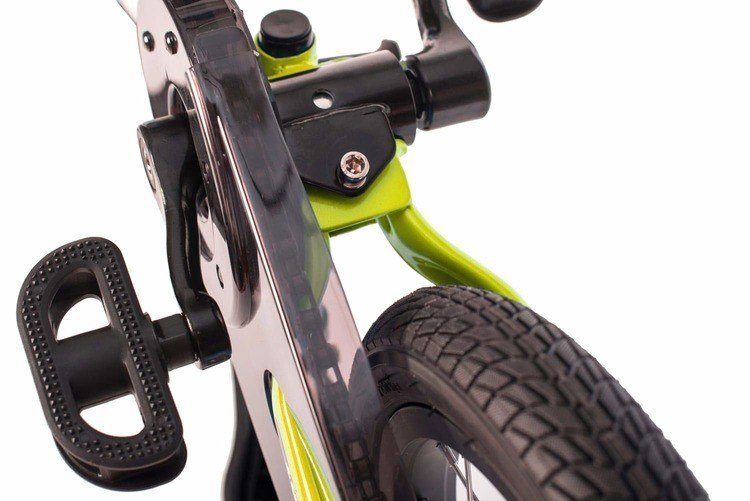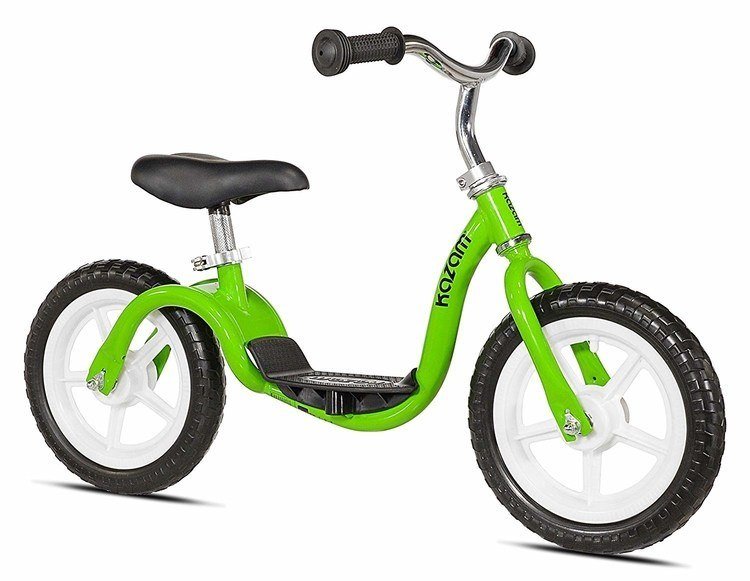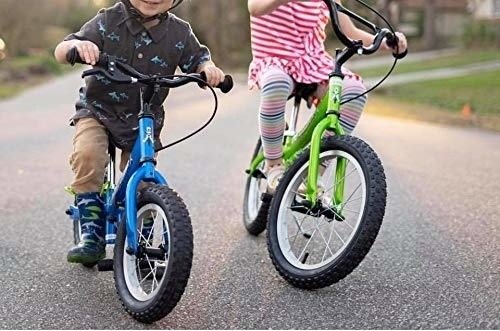I think pretty much everybody has had some kind of experience when it comes to learning how to ride a bike. For most of us, that tends to be training wheels that come off once we learn how to actually ride a bike. Certainly, that was my own experience when I was a kid, and I still have fond memories of my parents teaching me how to ride a bike.
Top 5 Balance Bikes
Of course, things do change, and balance bikes have now become the ‘in’ thing when it comes to teaching kids how to cycle. Don’t just off-handedly brush it off as the new thing though, as it has quite a bit of thought going behind it, and I might have actually preferred to use a balance bike instead of training wheels. It’s very weird seeing a bike without pedals, but you’ll get over it pretty quickly, especially when you start seeing the quick results from your kid.

With a used bike, you don’t have to break the bank to give it a shot, and there are even some balance bikes that have pedal kits you can add in the future. Either way, you’ll be impressed with your kids’ progress, and you might even get a chance to ride with them sooner than you think!
1. Best Overall - Strider Sport
Specifications:
- Wheel size: 12”
- Weight: 9.6 lbs
- Weight capacity: 60 lbs
- Tire type: Foam
- Brakes: No
Key Features:
- Maintenance-free foam tires
- Brake mount allows you the option to add a foot-operated brake
- Includes extended seat post so it can grow with your child
- Padded seat and handlebars
Strider Sport Review
We bring you this pick with confidence since Strider is as a reliable name in the balance bike market. In fact, the Strider Sport model is regarded by many as the best balance bike you can buy for your kid, and for many good reasons, which we’ll get to in a moment.
The bike’s light form makes it a breeze to handle, and it offers the most adjustability as a balance bike for a wide range of ages.
Lightweight and Durable
Boasting a sporty design, everything about this bike is inviting for a child. It even comes in an array of different colors so you can choose your kid’s favorite. The truth is, the bike’s subtle complexity is hidden under a veneer of playfulness.
Strider doesn’t want your kid to quickly lose interest in learning how to balance, so they designed their Sport to be one of the lightest on the market. This makes the bike easier for the little rider to maneuver, and with impressively low weight, you don’t even have to compromise sturdiness.
The Strider Sport’s frame is comprised of durable steel that is made to withstand the punishment of learning to ride a bike. Foam tires also back up the lightweight construction because they weigh less than rubber, and are puncture-proof so you can postpone worrying about flats to much later in life.
It takes a thing or two off your mind in not having to pump the wheels every now and then, but the lack of traction and grip on foam tires could still be worrying if your kid likes to slide on smooth surfaces.
A Masterclass in Versatility
What makes this model rank high is its extreme adjustability. With easy height changes on the seat post, the Sport will grow with your child or can be easily shared if you’ve got more than one running around!
There are no brakes, and your kid probably doesn’t need them, but Strider gives you the option of mounting brakes behind the footrest.
We also like the Sport because it has an added comfort factor with padded saddles and handlebars. What’s best about its well-designed geometry is that it provides your kid with enough space to be able to easily navigate the twists and turns.
Not to mention, a mini-me friendly composition makes use of significantly narrower handlebars so it can provide your toddler’s little hands with a strong, comfortable grip.
Pros
- Very lightweight
- Easy to assemble
- Mini handlebars designed for toddlers
- Very adjustable and versatile
Cons
- Pricey
- Exposed seat pin can scratch legs
2. Best Budget - Retrospec/Critical
Specifications:
- Wheel size: 12”
- Weight: 9.2 lbs
- Weight capacity: 70 lbs
- Tire type: Foam
- Brakes: No
Key Features:
- Safe, foot-to-floor frame design to increase a child’s grip and control
- Bulbous handlebar tips
- Step-thru frame
- Adjustable handlebars and seat
Retrospec/Critical Cycles Cub Review
There’s a slight chance you might be thinking that you’ll need to put a lot of money into buying a balance bike.
Thankfully, you don’t really have to. For those of you interested in the efficient way of teaching your kid to cycle, we’ve picked the best balance bike that can do the job without breaking the bank.
A Unique Design
Many balance bikes come in a variety of colors, but this one aces the design test. The way it’s shaped is as adorable as it is safe for your child to handle.
The step-thru frame makes it a snap for your little one to get on and off, and the foot-to-floor construction eases their first accelerating steps. The Cub makes it easy for them to develop confidence with balance and coordination due to the control provided by the design.
Bonus points go to this bike’s height-adjustable seat and handlebars. The handlebars also offer a wider grip at their end, acting as shock absorbers and make for a firmer grip to protect your kid from falling.
The unique frame design was made with safety and stability in mind so you can trust your child running around with it freely (to an extent, you should always keep a watchful eye!).
Maintenance Free Construction
As with the Strider Sport, the Retrospec Cub similarly uses foam tires rather than rubber ones. With tool-free assembly, your kid will be able to enjoy the Cub for a long time since it has adjustability and an extremely strong and durable steel frame.
We found the footrest might be a bit longer than it should be, but with all its other desirable safety features, this balance bike is a perfectly affordable teaching tool for your kid.
Pros
- Affordable
- Excellent support and sturdiness from the high-tensile steel frame
- Unique frame design adds stability
- Kid-friendly, attractive design
Cons
- Footrest is problematic and can interfere with movement
- Foam tires lack traction, unsuitable for smooth pavements
3. Best with Pedal Kit - Strider 14X
Specifications:
- Wheel size: 14”
- Weight: 12.5 lbs (15 lbs with pedals)
- Weight capacity: 80 lbs
- Tire type: Rubber/Air
- Brakes: No
Key Features:
- Comes with easy-to-install pedals
- Custom footrest that is removable when adding pedals
- Ergonomic padded seat and cushioned handlebar
- Height-adjustable seat and handlebars
Strider 14x 2-in-1 Balance To Pedal Bike Kit Review
It probably isn’t the most cost-effective thing in the world to move on from balance bikes to purchasing another bike with pedals. Especially because the transition won’t even take too long due to how efficient balance bikes are at teaching your kid to balance.
It might be a good option to consider buying one that comes with a pedal kit for a smoother, faster, (and cheaper) progression. What better than another Strider bike to add to the list?
Easily Convertible
The best thing about the Strider 14X is that it doubles as a balance bike and a regular bike. It comes with easy-to-install pedals so when your kid is sure they’ve got their balance in check, you can pop off the removable footrest and start teaching them how to pedal.
There aren’t many balance bikes with the same versatility option, but we love this one because it’s cheaper than the others and offers a wider adjustability range.
Great Geometric Design
The pedal kit available is already an attractive enough feature, but there’s so much more to the Strider 14X than meets the eye. For example, the larger 14” wheels make for great geometry that has your kid positioned upright for more comfort, visibility, and control, making the learning process more efficient and adding to their skill set.
For optimizing said comfort, the 14X boasts cushioned, ergonomic padded seats and handlebars. Also, the half-width pedals barely take up space and won’t get in the way if they ever want to put their foot down.
All in all, the Strider 14×2 is a great balance but with an option to add a couple of pedals to it and turn it into a full bike, without having to purchase a whole new bike anew.
Pros
- Great, upright geometry
- Versatile and adjustable
- Rubber tires offer strong grip and traction on a variety of surfaces
- Comfortable
Cons
- 14” tire size might not be suitable for smaller or younger riders
- Exposed bolts prone to scratching child’s legs
4. Best with Footrest - KaZAM v2e
Specifications:
- Wheel size: 12”
- Weight: 9.9 lbs
- Weight capacity: 60 lbs
- Tire type: Foam
- Brakes: No
Key Features:
- Step-in, ergonomically designed, patented footrest
- Padded saddle
- Durable steel frame
- Adjustable seat and handlebars
Kazam V2e Review
Many balance bikes on this list already include footrests, but for this category, we picked the one that employs the most innovative footrest mechanism. Giving you the most value for your money, the KaZAM v2e comes with a two-year warranty. It’s the perfect choice if you prioritize comfort and performance for your kid at a budget-friendly price.
As Seen on Shark Tank
What’s unique about the KaZAM v2e is that it boasts a patented footrest. It’s ergonomically designed as a step-in for minimal fuss, and it’s an exclusive design feature that wins against many competitors. Wide enough to be a perfect fit for your kid, the footrest design focuses on balance and comfort.
Stable and Sturdy Construction
The KaZAM v2e’s frame is made of steel and makes for a strong and long-lasting balance bike your child won’t easily outgrow. Your kid will love the stability of the unique design, and along with the footrest, will have them gliding along with confidence. Although not the lightest, this balance bike is lighter than its two siblings and makes it easier for your little one to maneuver.
Pros
- Affordable
- Footrest base is wide for a perfect fit
- Good geometry and construction help child easily find their gravity center
- Lightweight
Cons
- Foam bikes offer no traction
- Not recommended for younger kids for its size
5. Best with Brakes - Glide Bikes
Specifications:
- Wheel size: 16”
- Weight: 10 lbs
- Weight capacity: 125 lbs
- Tire type: Air/Rubber
- Brakes: Yes
Key Features:
- Handbrakes for more stopping control
- Comes with removable footpegs and kickstand
- Sealed bearings
- Turning limiter
Glide’s Go Glider Review
This is the only bike on the list with handbrakes, and it’s our pick because it has plenty of other safety features that make it stand out. Although expensive, it’s completely versatile and includes practical accessories, which sort of explains the price.
The bigger tires and frame make it more suitable for older kids, so if you’re looking for a safe and reliable balance bike for a child aged 5 to 10, this is a good option.
Designed for Safety
Handbrakes are not a common feature among most balance bikes, but the Go Glider ranks high in reliability and incorporates qualities that offer your kid more control. What will give your child a good confidence boost is that the bike’s frame is also designed for safety and stability due to its low center of gravity; they won’t have to worry about wobbling!
The bike also comes with a turning limiter that restricts unnecessary movements, giving the young rider more balance.
All-Around Protection
If you’re willing to pay the price for this bike, you’ll be happy to know it’s durable enough to last your kid for a long time. With a frame made of sturdy steel alloy, the Go Glider is strong enough for all the falls and scratches your child’s learning curve entails.
In addition, the bearings on this balance bike are sealed to protect them from the wear and tear of environmental factors like dust, mud, and rain.
Pros
- Optional pedal kit available
- Stable
- Rubber tires offer good traction for any terrain
- Adjustable seat and handlebars
Cons
- Not suitable for younger kids
- Low value for money
Balance Bikes: Frequently Asked Questions
What’s the Difference Between Balance Bikes and Training Wheels?
As they’re pedal-less, balance bikes teach children the most important skill when it comes to riding a bike: balance. Since it’ll be the first thing they learn at an early age, they’ll feel more confident when it’s time to move on to unsupported pedaling. It also helps them learn to better control and steer the bike when it comes to navigating using their body weight.
Because many of us have been taught how to ride a bike using training wheels, the concept of a balance bike might seem odd to some. The way we remember it, training wheels were efficient enough to do the job. So what changed?
The truth is, training wheels might actually be worse for teaching your child how to ride a bike than a balance bike. In fact, training wheels prolong the learning experience because they only teach kids how to pedal. When relying on training wheels or stabilizers, children barely learn how to balance or steer properly.
Bikes with training wheels offer a rigid, upright position, so a kid’s idea of steering the bike is just that of turning the handlebar. In reality, you learn to steer by leaning right or left. Learning how to steer is also some good exercise for learning balance.
Once the training wheels are off your kid’s bike, you’ll find they’ll have to go back a step, unlearn what they got used to, and learn everything all over again. Because they hadn’t yet familiarised themselves with the concept of balance, they’ll have to readjust to different steering and pedaling techniques. This is in contrast to children who have instead graduated from balance bikes, since they’d only need to add pedaling to their existing skillset.
How Important Is Having Handbrakes on a Balance Bike?
Most balance bikes don’t offer handbrakes because children using their feet is a fine source of stopping on its own. Handbrakes are not all that necessary on a balance bike, and they might even be difficult for some kids to learn to use when they first start riding. However, it might still be beneficial to consider buying one that incorporates them.
In the case you’re getting a balance bike for an older rider who’s just learning how to bike, handbrakes are a good idea because it allows them the opportunity to ride fast. In general, they’re also a desirable safety feature that can prevent injury, especially if your little one rides on hills or amongst many obstacles. People also tend to forget that stopping or learning to brake is as important as many other cycling skills, so it better prepares kids for the transition to pedal bikes. Finally, it can save your child’s shoes from wearing out.
What Should I Consider When Buying a Balance Bike for My Kid?
After making sure your child is age-appropriate for a balance bike, you need to look for the bike that best fits them. Some kids start as young as 12 months, so it’s important to make sure their feet can reach the ground. The size and fit of the balance bike play a huge role. As a general rule of thumb, aim for a bike with a long wheelbase and enough space between the handlebars and the seat.
Understanding the different tire types that go into balance bikes could help you make a choice.
Foam tires are light and don’t require pumping so they will never go flat, but they don’t boast much traction. Rubber tires are generally a better idea for many because, although heavier and susceptible to punctures, they offer better traction and versatility for different surfaces. They’re also more comfortable because they’re able to absorb bumps and provide better grip control on the ground. You also might need to buy a pump, so keep that in mind.
Weight is similarly an important factor because there’s no use for a balance bike if it’s too heavy for a kid to haul around. To be able to learn how to balance easily and efficiently, a good rule of thumb is that the bike needs to be at most 30% of the child’s weight. The lighter the bike, the easier it will be for your kid to maneuver it.

